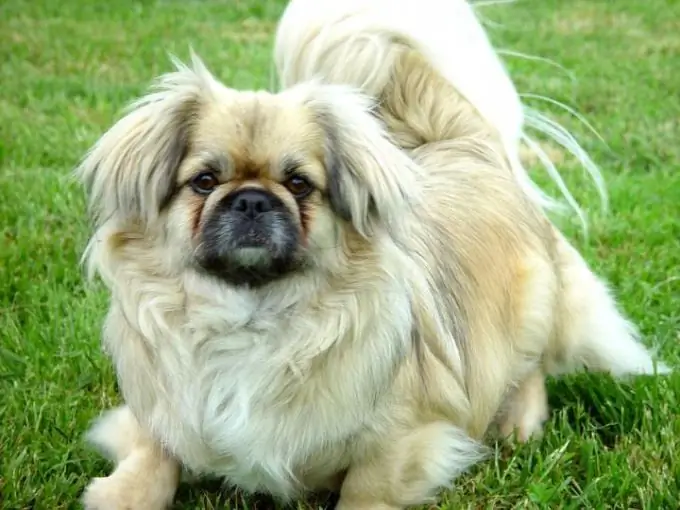To draw a Pekingese, you need to study the structural features of his body and reflect them in the drawing. This will be enough to make a dog of this particular breed recognizable.

It is necessary
- - paper;
- - pencil;
- - eraser;
- - paints;
- - brushes;
- - palette;
- - colour pencils.
Instructions
Step 1
Place the drawing paper horizontally. Divide the space into five equal parts using vertical lines. Leave the second line on the left, and erase the rest - this segment will become the center axis passing through the center of the dog's head and ribcage.
Step 2
Divide the axle into 4 equal parts. Remove the upper section. Divide the remaining segment into two halves - the top will be occupied by the head of the Pekingese, the lower - by the chest.
Step 3
Draw the dog's head in the form of an oval. Thanks to the fluffy hair on the ears, the oval will be stretched horizontally. The width of the head should be one and a half times its height. Draw the ribcage in the form of a circle, then make the lower part narrower.
Step 4
Draw a horizontal line from the level of the dog's chin to the right. It should deviate from the central horizontal axis by 45 °. Make the length of the line the same as the width of the head of the Pekingese. From the bottom of the chest, draw another horizontal line parallel to the first. Draw the body of the dog, clarifying its outlines and removing unnecessary lines. Mark the tail with a wide oval. Draw elongated paws with long strands of hair at the base.
Step 5
Draw the head of the Pekingese in more detail. Divide the right half into two more parts. The entire width of the outermost section on the right should be occupied by the ear. Draw the dog's left ear in the same way. Divide the central vertical axis of the head in half. Draw a muzzle at the bottom. Draw a square first, then round its corners. Draw the dog's eyes at the top corners. They are drop-shaped, the wide part of the “drop” is the inner corner of the eye.
Step 6
Color in the drawing. You can use paints or pencils. If you have chosen colored pencils, apply strokes to match the direction of the fur's growth. When painting with paints, fill with large spots, and after the first layer dries, add small strokes with a thin brush or pencils.






